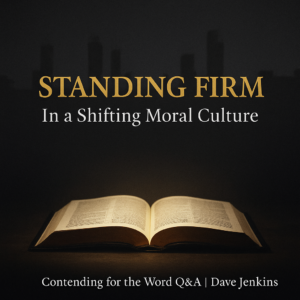⏱️ Estimated Reading Time: 7 min read
There are doctrines that Christians hold to which do not appear by name in the Scriptures but are clearly represented within them. Terms such as the Trinity are not found in the Bible explicitly, yet the principles are clearly present. This article will not go into great detail on these topics but will focus on the doctrine of Penal Substitutionary Atonement (PSA). We will address three primary questions: 1) What is it? 2) What does the Bible say/teach about it? and 3) Why is it important?
Article Preface
Before we begin, it’s important to recognize that Penal Substitutionary Atonement (hereafter PSA) is just one model among many. Other models include the Satisfaction Theory, Christus Victor, and the Ransom Theory. This article serves as a brief introduction to a much larger discussion surrounding atonement theories. It is also worth noting that these are simply theories of the atonement, so this discussion is primarily for Christians engaging with fellow Christians.
PSA Defined
Simply put, the doctrine of Penal Substitutionary Atonement teaches that Jesus Christ’s death on the cross was perfectly just, perfectly satisfying, and done on behalf of destitute sinners; an act whereby humanity is fully reconciled to God. New Testament scholar Tom Schreiner defines PSA as Jesus taking on Himself the full punishment for sin on our behalf, which serves as the truth by which all other results and benefits are anchored.[i]
PSA Explained
In simple terms, PSA can be explained by breaking it down into three key aspects: 1) the Penal aspect, 2) the Substitutionary aspect, and 3) the Atonement aspect.
When Christians refer to the “penal” aspect, they are speaking of a penalty for violating a rule, command, or law. For instance, in California, there is a code of laws that governs its citizens: the California Penal Code. The Penal Code defines what constitutes a crime and specifies the corresponding punishment. These penalties range from community service to incarceration, depending on the crime. In the same way, the Scriptures speak of God as the ultimate moral standard, defining what is holy and perfect. Genesis 9:6 says, “Whoever sheds human blood, by humans his blood will be shed, for God made humans in His image.”
Any violation of God’s word and commands is sin and rebellion against God. One simple example is the Ten Commandments: “Do not murder. Do not commit adultery. Do not steal. Do not give false testimony against your neighbor” (Exodus 20:13-16).[ii] The books of Exodus, Leviticus, Numbers, and Deuteronomy contain God’s Law, given to the people of Israel. This law set the standard for Israel’s worship, civil matters, and ritual cleanliness. If Israel failed to uphold these laws, they would transgress and incur the penalties that God established for breaking His law. This is a glimpse of the biblical portrait of penal law. God placed within His law the consequences for Israel’s failure to uphold His covenant, including curses (Deut. 27:11-26) and blessings (Deut. 28:1-14). If Israel obeyed God, they would experience covenant blessings and abundance; if they disobeyed and followed other gods (which they did), they would experience covenant curses.
The next word, “substitutionary,” refers to the idea of something taking the place of another. In Genesis 3, when Adam and Eve violated God’s command by eating the fruit from the forbidden tree, they were exiled from the Garden of Eden. Before their exile, “The Lord God made clothing from skins for the man and his wife, and He clothed them” (Genesis 3:21).
Interpreters have traditionally understood this to mean that something (likely an animal) was slain to clothe Adam and Eve, covering their nakedness. This imagery is used throughout the Bible, especially in the Old Testament. The Law of Moses required the blood of spotless animals to atone for sins before God (Lev. 4:1-5:13). Rather than having the individual Israelites suffer the penalty of death, an innocent animal was put forward as a sin offering to God on their behalf.
Walter A. Maier III, in responding to an opposing perspective on PSA, writes, “That portion of Scripture [the Old Testament] contains crucial truths with regard to the nature of the atonement.”[iii] Maier is correct; the Old Testament is full of images demonstrating the idea that the punishment for sin is placed upon a substitute, as an act of mercy toward the sinner. Moses often interceded on behalf of the people of Israel, asking God to show mercy (Num. 14:11-20; Ex. 32:7-14). Moses even offered to be cut off from the people if it meant God would show mercy and spare Israel for the sake of His holy name. This picture of intercession is central to the doctrine of PSA. Not only was Christ’s death on the cross to bear the penalty for rebellion against God, but it was done on behalf of others (sinners) when it was not required. Jesus gave Himself willingly and in full obedience to the Father.
The final aspect of PSA is the atonement itself. The Lexham Bible Dictionary defines atonement as “the reconciliation and reparation of the relationship between God and humanity by means of a sacrifice.”[iv]
A popular gospel tract illustrates this concept with a large chasm between a sinner and God, with nothing connecting the two. The tract then shows the cross of Jesus bridging the gap between the two sides, symbolizing the reconciliation made possible through His sacrifice. Through Christ, access to God is now possible. Forgiveness has been made available. Reconciliation and forgiveness are available to those who trust in Jesus’ work on the cross as sufficient to reconcile them to God.
What Does the Bible Say About PSA?
We’ve already referenced a few Scriptures, but to provide a more comprehensive understanding, we will highlight five key verses. 1) Jesus came to serve and give His life as a ransom for many (Matt. 20:28; Mark 10:45). Jesus’ giving up His life was substitutionary; Christ’s sacrifice was made on behalf of others. 2) Jesus’ sacrifice inaugurated a New Covenant (Jer. 31:31, Heb. 9:15), and Christ Himself mediates it. Jesus’ sacrifice, according to the author of Hebrews, took place to redeem humanity from the transgressions of the Old Covenant. 3) Jesus was completely sinless, spotless, and perfect (John 1:29; Heb. 4:15). He never sinned, even though He was tempted as we are. 4) Jesus is still reconciling sinners today (Heb. 4:16). For those who have trusted in Jesus, we now have present access to God through the Savior, obtaining mercy and grace when needed. 5) Jesus’ sacrifice covered our sins and continues to cover our sins (1 John 2:1-2).
Conclusion
Penal Substitutionary Atonement is something that must be done for us because we cannot achieve it for ourselves. PSA, while not explicitly stated in Scripture, is clearly articulated throughout the narrative of the Bible. It reaches its climax in the perfect life, atoning death, and glorious resurrection of Jesus Christ. Jesus is the propitiation for our sins. In other words, He Himself is the sacrifice that satisfies God’s justice. This is what has been done for us—the glorious Gospel that saves the lost. Jesus’ sacrifice resulted from perfect obedience (Phil. 2:8), motivated by joy (Heb. 12:2), and God’s sovereign plan to redeem creation (Acts 2:23; Rev. 13:8). While PSA is one theory among many, this article shows that it is firmly rooted in Scripture and has answered the questions of what it is, the biblical support for it, and why it matters for both believers and non-believers. May this help you find your reconciliation with God by trusting in the perfect atoning work of Jesus on your behalf.
[i] Thomas Schreiner, “Substitutionary Atonement,” The Gospel Coalition, Concise Theology Series, https://www.thegospelcoalition.org/essay/substitutionary-atonement/
[ii] Unless otherwise specified, all Scripture references are to the Christian Standard Bible (CSB), (Nashville, TN: Holman Bible Publishers, 2017).
[iii] Walter A. Maier III, “Penal Substitutionary Atonement?” Concordia Theological Quarterly 84, no. 3-4 (Winter 2020), 246.
[iv] John D. Barry, “Atonement,” Lexham Bible Dictionary, (Bellingham: WA, Lexham Press, 2016).
My name is Arturo Echeverria. I’m 28 years old and 5 years married to my lovely wife Ashley. Together we have 4 children, our first, June, is waiting in eternity in the presence of the Father. I have the honor and privilege of serving at Cornelia Avenue Southern Baptist Church in Fresno, CA as Worship Ministry Director. I am a current B.A./M.Div student attending Midwestern Baptist Theological Seminary in Kansas City, MO. I grew up in Southern California and have spent the past 15 years serving as a worship leader across multiple states, churches, and denominations. I have a deep passion for worship ministry, for theology, and a heart for the local church to be edified in doctrine and their affection for God. I enjoy reading, writing, and spending time with my family.
By God’s grace, I grew up in a Christian household with parents who are believers. My father was probably my greatest influence in matters of faith and ministry. When I was in high school, the Gospel gripped my heart and revealed to me my need for a savior to reconcile me to God. It was after my conversion that I felt a strong call to pastoral ministry. I benefitted from great leaders and pastors who modeled for me what faithfulness in ministry looks like. Today, I still have leaders, close friends, and pastors who have come alongside me and supported my pursuit of God’s call on my life. I hope that what I write has the effect of deepening our affections for the Lord, edifies the Church, and unashamedly proclaims the Gospel of Jesus Christ.




